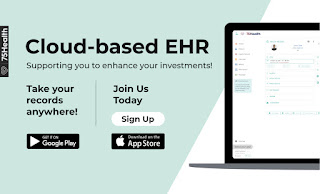5 Things That Won't Happen in EHR Software
Physicians
and healthcare providers have started to use EHR
Software at a faster rate. With the reference to Centers for Medicare &
Medicaid Services, 73 percent of healthcare organizations are
registered to claim EHR Incentive Programs.
Adapting
to initial operation can be difficult because it demands time, resources, and
cooperation from the entire team. Later, it becomes easy to operate as physicians
and medical staff could have developed a real-time experience with the software.
EHR Software can be called patient-centered records. It is
available for authorized users to use and it makes the clinical workflow easy. The
software usage promotes better health outcomes at the same time it reduces the
costs for both the patient and provider.
A
few years back implementing EHR Software had many issues and takes much time to
get resolved in a healthcare system. It created a lag in the productivity graph.
The main aim of the article is to give the certain belief that using EHR Software is an instant process by being
aware of the challenges in advance. A list of major hurdles to the providers is
given below.
Staff Resistance
Not
every person in the medical team is open to technological implementation. They
fear using Electronic Health Records Software because they think it involves complicated
steps. EHR Software contains a self-learning tutorial to make it easy and the user
interface is designed for simple understanding.
Lack of Planning
EHR
Software brings cultural changes in the organization so the management faces
challenges if the implementation has not been planned well. Now, admins can
strategically plan the workflow in advance and expect proper commitment from
the team.
Data Breach
Data
privacy is the next big concern for providers. Computerized files give chances
to hackers to use data for illegal transactions. EHR Software follows a national policy to protect confidentiality.
The data is saved in an encrypted format with advanced security options which
gives a tough fight to a hacker to even enter.
Technical Resources Limitation
Clinical
organizations rarely own an in-house technical team. To use EHR Software, an organization
needs big cheques to buy hardware, software license, and local backup support.
Select EHR Software which runs only
in cloud platform as it eliminates
all the local requirements and gives you entire support in the SAAS model.
Poor Synchronization
Clinical
data is a thread file of patients as it should contain the entire history.
Certain companies don’t allow third parties to enter patient data and this can
create an incomplete patient profile that leads to poor quality of treatment. Interoperability
is a must for EHR Software because it allows the exchange of information with
different providers.
Conclusion
EHR Software doesn’t just create easy life for medical providers
but also simplifies patient care. It is the new standard in medical practice
and provides benefits such as transparency, online portals, and a HIPAA-compliant
system for patients.




Comments
Post a Comment